Snow on Branches 1936
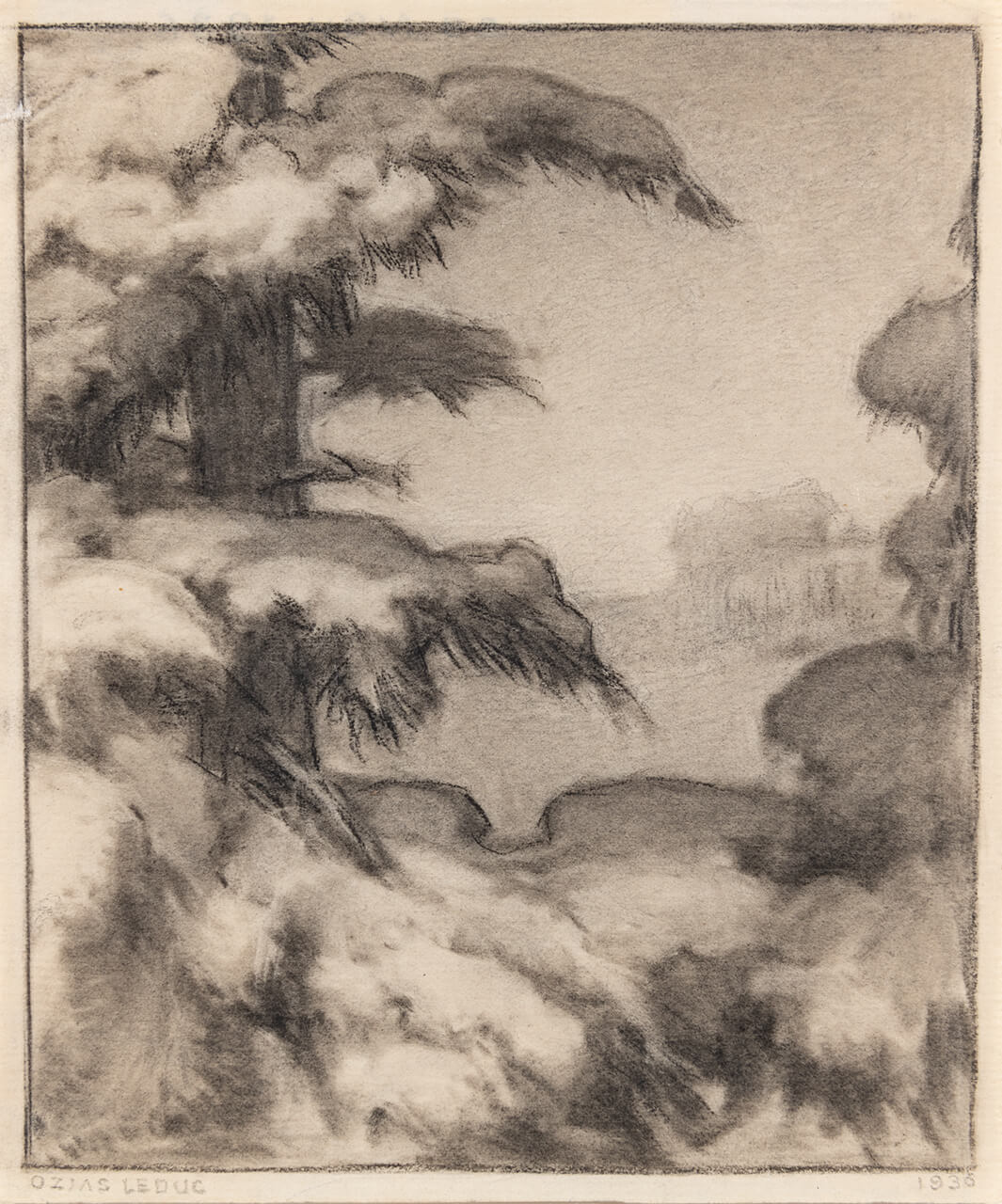
Ozias Leduc, Snow on Branches (Neige sur les branches), from the series Imaginations, 1936
Graphite on paper, 17 x 14.5 cm
Private collection
Among the projects that occupied the latter part of Ozias Leduc’s career, a special place belongs to the series of drawings entitled Imaginations, which were created between 1936 and 1942. When the seventy-two-year-old artist began this ensemble, was he already aware of the breadth and diversity of the work he was undertaking? In all, he drew fifty-four landscapes without returning to the actual places, simply by calling on his memory and his imagination. He did not invent or conceive new subjects. The series is a synthesis, an occasion to revisit landscape as he understood it and once again treat themes that he had explored many times before.
These are small-format drawings, about 17 by 13 centimetres, and each represents a condensed vision of a larger view or a natural phenomenon. They seem to have been made to offer as gifts, and the titles always include the name of a beneficiary. The listed recipients make up a portrait of Leduc’s social circle at the time. There are faithful old friends (the Bindoffs, Bruce F. Campbell, Édouard Clerk, Guillaume Lahaise [Guy Delahaye (1888–1969)], Olivier Maurault [1886–1968]), an architect (Louis-N. Audet), painters (Paul-Émile Borduas [1905–1960], Rodolphe Duguay, Eugène L. Desautels, André Morency), and a photographer (Paul Gagné); and there are newer acquaintances (Émile Filion, Reine Lavallée, Claire Lavoie, Gérard Malchelosse, Gabrielle Messier [1904–2003], Gérard Morisset, Félix-Antoine Savard, Albert Tessier). The Bindoffs, loyal patrons and vistors to his studio, received four drawings; the photographer Paul Gagné and his wife, three; the Borduas, two, including Rainbow (Arc-en-ciel), 1936; two went to Leduc’s assistant Thérèse Brouillette. Seventeen drawings were given to women, and six to couples.
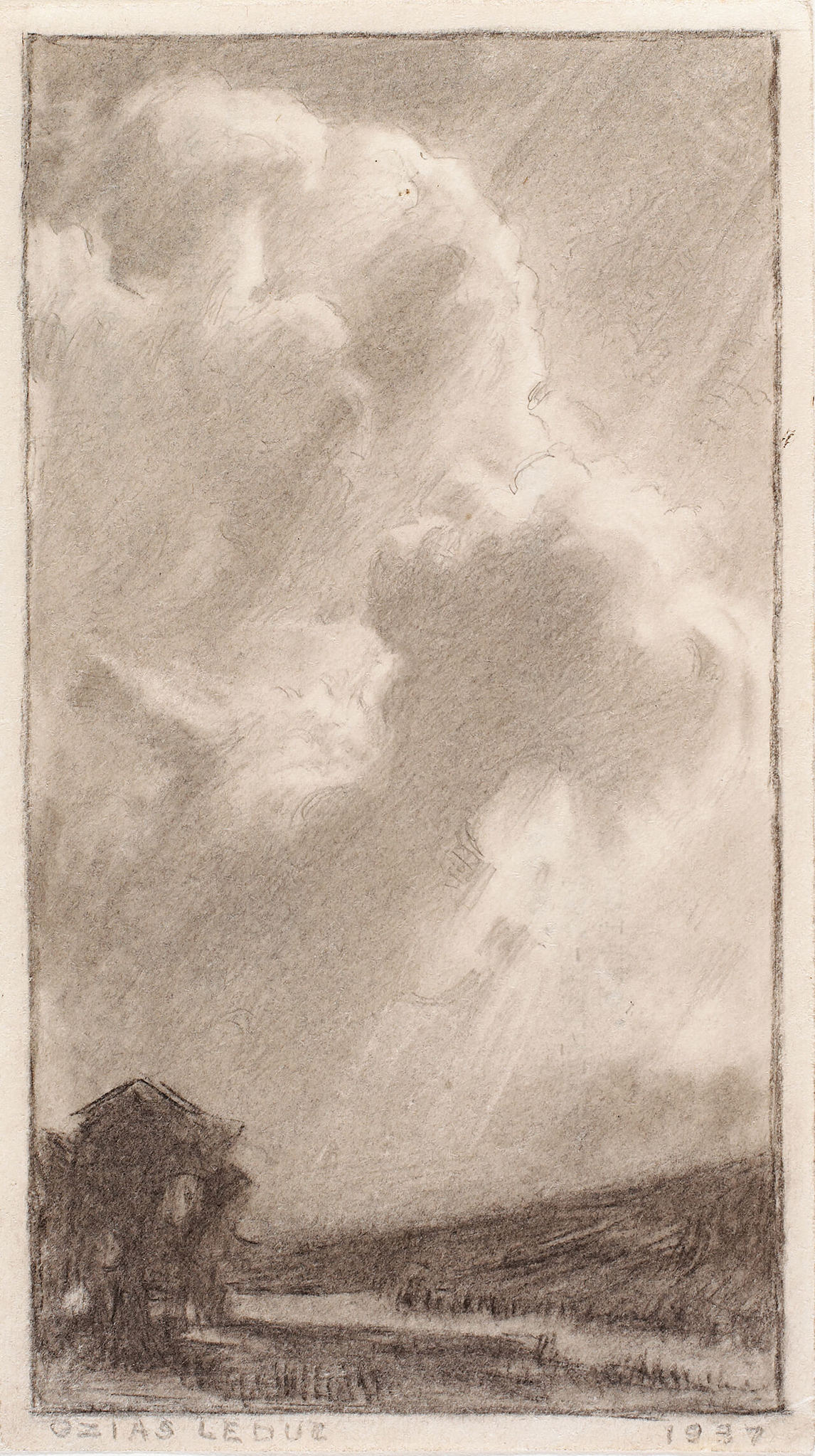
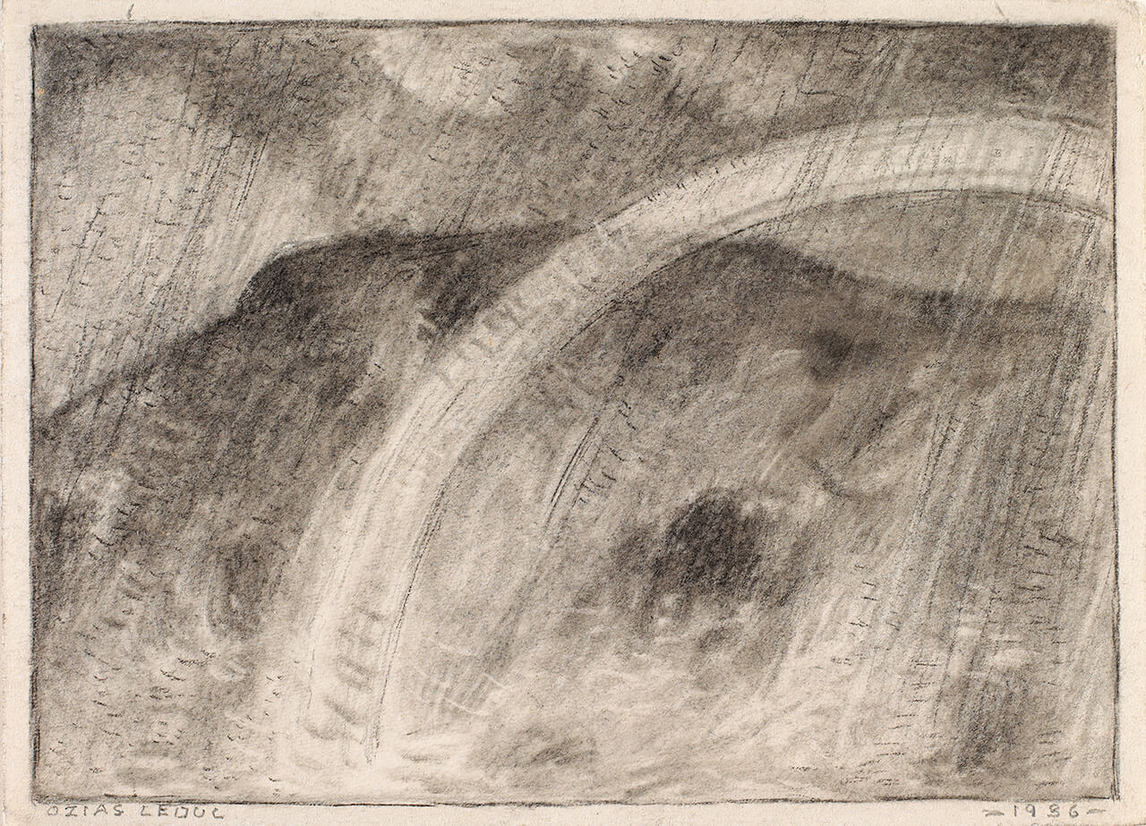
The link between the iconography of the drawing and the person to whom it was given cannot always be established. Sometimes the subject seems to be adapted to the person: Félix-Antoine Savard, author of the novel Menaud, maître-draveur (1937), received the drawing titled Storm on Paper (Tempête sur papier), 1937, which evokes the movement of flames in the trees; and Bruce F. Campbell, former proprietor of the mountain, was given The Lake, Mont Saint-Hilaire (Le lac, mont Saint-Hilaire), 1937. Snow on Branches, number eleven in the series, was offered to Gabrielle Goyette Borduas, who in turn gave it to Pierre Elliott Trudeau. This drawing, with its view of snowy trees in the foreground, is similar to Green Apples (Pommes vertes), 1914–15, and suggestive also of the atmosphere of Grey Effect (Snow) (Effets gris [neige]), 1914.
For the most part the drawings are in graphite. Their composition includes dense masses and shading to create the effect of volume, and highlights made with an eraser. The series brings together varied studies of light combined with natural phenomena (waves, moonlight, a rainbow, fog, twilight, dusk, the aurora borealis) and shown from different points of view, some close up and others panoramic. The series is impressively diverse in subject matter, but even more so in the vibrancy of the graphite on the paper. Drawing is primary, and the gestures and movements of the artist’s hand are very visible.
The series constitutes a kind of gallery of talismanic images, some treated realistically, others evoked in more suggestive ways. Views of Mont Saint-Hilaire are mingled with imaginary places. Always, the artist is guided by memory and reverie in these motifs drawn from the record of his work and his art over forty years.

 About the Author
About the Author
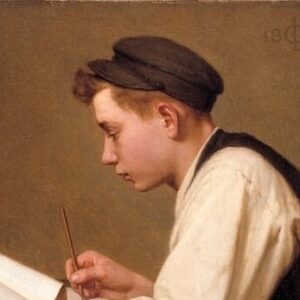 More Online Art Books
More Online Art Books
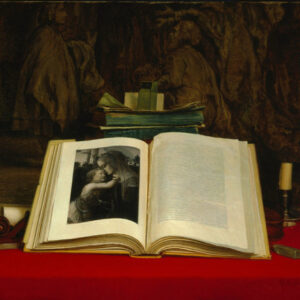 Acknowledgements
Acknowledgements